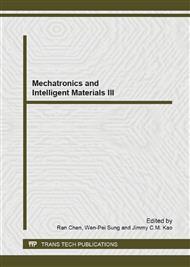p.56
p.60
p.64
p.69
p.73
p.78
p.82
p.85
p.90
Effect of Different Content of AlF3 of the Zinc Flux and Temperature on the Spreading Performance of Zn20Sn
Abstract:
In this study, AlF3 was added into the Zinc flux and the spreading area of Zn20Sn of every flux formula was measured. The spreading area of Zn20Sn of different temperatures of the optimal content of the AlF3 was measured as well. The result showed that the spreading area of Zn20Sn increased with the content of AlF3 increasing when the content was below 2%. the spreading area of Zn20Sn decreased with content of AlF3 increasing when the content of AlF3 exceeded 2%. The spreading area of Zn20Sn was increased 126% than that of the matrix solder when the temperature was 470°C and the content of AlF3 was 2%.
Info:
Periodical:
Pages:
73-77
Citation:
Online since:
June 2013
Authors:
Keywords:
Price:
Сopyright:
© 2013 Trans Tech Publications Ltd. All Rights Reserved
Share:
Citation:


